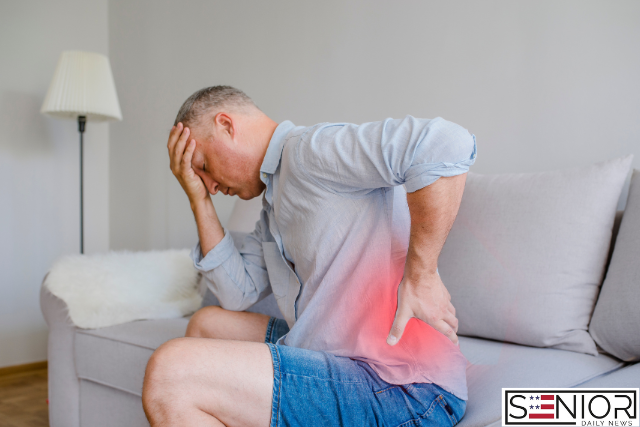Managing Chronic Pain Without Medication

Chronic pain is a long-standing condition that affects millions of people around the world, influencing not only physical well-being but also emotional and psychological health. Often defined as pain lasting longer than three months, chronic pain can stem from various causes including injury, illness, or underlying health conditions like arthritis or fibromyalgia.
While medications have traditionally played a pivotal role in pain management, many people seek alternative, non-pharmacological solutions due to concerns about side effects, dependency, and overall long-term health. Fortunately, an expanding body of research and real-world experience points to a variety of non-drug methods that are effective for managing chronic pain.
In this comprehensive guide, we will explore the major non-medication approaches to chronic pain management. These techniques not only help reduce pain but also empower individuals to regain control of their lives, boost functionality, and enhance overall quality of life.
Understanding Chronic Pain
Before diving into management techniques, it’s important to understand the nature of chronic pain. Unlike acute pain, which signals an injury and typically resolves as the body heals, chronic pain persists. It can occur even when there is no obvious physical cause, and is often influenced by complex interactions between biological, psychological, and social factors.
Common causes of chronic pain include:
- Arthritis and other joint conditions
- Back problems
- Neuropathic pain (nerve damage)
- Fibromyalgia
- Migraines and tension headaches
- Post-surgical pain
- Chronic fatigue syndrome
1. Physical Therapy and Exercise
The Role of Movement
Physical therapy is often the cornerstone of non-drug pain management. Trained physiotherapists assess movement limitations, posture, and biomechanics to create customized programs aimed at improving strength, flexibility, and endurance.
Benefits of physical therapy include:
- Strengthened muscles around painful joints
- Improved mobility and function
- Reduced inflammation
- Prevention of further injury
Types of Exercise That Help
- Stretching: Enhances flexibility and reduces muscle tension.
- Strength training: Builds muscle mass, supporting joints and reducing strain.
- Aerobic activity: Boosts circulation and releases endorphins, the body’s natural painkillers.
- Low-impact workouts: Swimming, cycling, and walking are gentle on the joints yet effective for pain relief.
Consistency is key. While it might be difficult to start exercising when in pain, regular movement can significantly reduce discomfort over time.
2. Cognitive Behavioral Therapy (CBT)
CBT is a structured, goal-oriented psychotherapy that helps individuals identify and change negative thought patterns and behaviors. It has been found particularly effective for managing chronic pain by addressing the psychological components of pain.
How CBT helps:
- Reduces the perception of pain
- Helps cope with pain-related depression or anxiety
- Improves sleep quality
- Encourages healthy behaviors
CBT teaches coping strategies such as relaxation training, problem-solving, and pacing activities. Many pain management programs integrate CBT as a core component.
3. Mindfulness and Meditation
Mindfulness is the practice of paying attention to the present moment without judgment. Meditation techniques, especially mindfulness meditation, can significantly alter the brain’s perception of pain.
Practices That Help:
- Mindfulness-Based Stress Reduction (MBSR): An 8-week program that combines meditation, body awareness, and yoga.
- Breathing exercises: Help calm the nervous system and reduce stress-related pain.
- Body scan meditation: Focuses attention on each part of the body, noticing sensations and releasing tension.
Scientific insights:
- MRI studies show that meditation can change the structure and function of pain-related brain regions.
- Practicing mindfulness regularly improves emotional resilience and lowers stress-induced pain flares.
4. Acupuncture
Acupuncture, a traditional Chinese medicine practice, involves inserting fine needles into specific points on the body. It is widely used for chronic pain conditions like osteoarthritis, low back pain, and migraines.
How it works:
- Stimulates the nervous system to release endorphins
- Enhances blood flow to affected areas
- Modulates pain pathways in the brain
Many people report significant improvements after a series of sessions. While the mechanism is still not completely understood, its efficacy has been supported by numerous clinical trials.
5. Chiropractic Care
Chiropractors use hands-on spinal manipulation and other alternative treatments to align the body’s musculoskeletal structure, particularly the spine.
Conditions it may help:
- Lower back pain
- Neck pain
- Headaches
- Joint problems
Key benefits:
- Improves posture and alignment
- Reduces pressure on nerves
- Enhances mobility
Chiropractic therapy is especially effective when combined with physical exercise and healthy ergonomics.
6. Diet and Nutrition
Inflammation is a common contributor to chronic pain. Modifying your diet can significantly influence how your body responds to pain.
Anti-inflammatory Diet Includes:
- Fruits and vegetables: Especially leafy greens, berries, and citrus
- Omega-3 fatty acids: Found in fatty fish like salmon, flaxseeds, and walnuts
- Whole grains: Oats, brown rice, and quinoa
- Spices: Turmeric and ginger have natural anti-inflammatory properties
Foods to Avoid:
- Processed foods
- Excess sugar
- Refined carbs
- Saturated fats
Staying hydrated and maintaining a healthy weight also reduces pressure on joints and alleviates certain types of pain.
7. Heat and Cold Therapy
Applying heat or cold to painful areas is a simple yet highly effective technique.
Heat Therapy:
- Increases blood flow
- Relaxes muscles
- Alleviates stiffness
Examples: Heating pads, warm baths, heat wraps
Cold Therapy:
- Reduces inflammation
- Numbs nerve endings
- Controls swelling
Examples: Ice packs, cold compresses
Alternating between heat and cold can be beneficial, depending on the condition. It’s best to consult a healthcare provider to determine the right approach.
8. Massage Therapy
Therapeutic massage can be an excellent way to relieve chronic muscle tension and stress.
Types of massage:
- Swedish massage: Gentle and relaxing
- Deep tissue massage: Targets deeper muscle layers
- Trigger point therapy: Focuses on painful muscle knots
Massage helps reduce cortisol levels, improve circulation, and increase serotonin, all of which contribute to pain relief and emotional well-being.
9. Sleep Hygiene
Chronic pain often disrupts sleep, and poor sleep in turn increases pain sensitivity—a vicious cycle.
Tips for Better Sleep:
- Maintain a consistent sleep schedule
- Avoid screens an hour before bed
- Create a calming bedtime routine
- Use a supportive mattress and pillows
- Keep the bedroom cool and quiet
Improving sleep quality can significantly lower the intensity of chronic pain and enhance recovery.
10. Biofeedback
Biofeedback teaches you to control physiological functions like heart rate and muscle tension. Sensors provide real-time data on bodily functions, helping individuals learn how to relax and manage stress responses.
Biofeedback can help with:
- Migraines
- Temporomandibular joint disorders (TMJ)
- Fibromyalgia
- Tension headaches
It empowers patients to gain more control over involuntary processes and is usually provided in clinical settings.
11. Art, Music, and Creative Therapies
Engaging in creative activities has been shown to reduce pain perception and improve mood. These therapies offer distraction, stress relief, and a sense of achievement.
Benefits:
- Reduce cortisol levels
- Increase dopamine production
- Provide social engagement (in group sessions)
Whether painting, listening to calming music, or writing, creative expression allows for emotional processing and coping.
12. Support Groups and Counseling
Living with chronic pain can feel isolating. Support groups offer a safe space to share experiences and learn from others facing similar challenges.
Advantages of group support:
- Emotional validation
- Learning new coping strategies
- Reduced feelings of loneliness
Professional counseling can also provide psychological tools to manage the mental burden of chronic pain, particularly for those dealing with depression or trauma.
13. Ergonomic Adjustments and Lifestyle Modifications
Making simple changes to your environment and daily habits can reduce pain triggers.
Ergonomic Tips:
- Use chairs with lumbar support
- Adjust screens to eye level
- Take frequent breaks when sitting
- Use proper lifting techniques
Other helpful lifestyle changes include quitting smoking (which reduces circulation), limiting alcohol, and practicing good posture throughout the day.
Image Designed Using Canva






